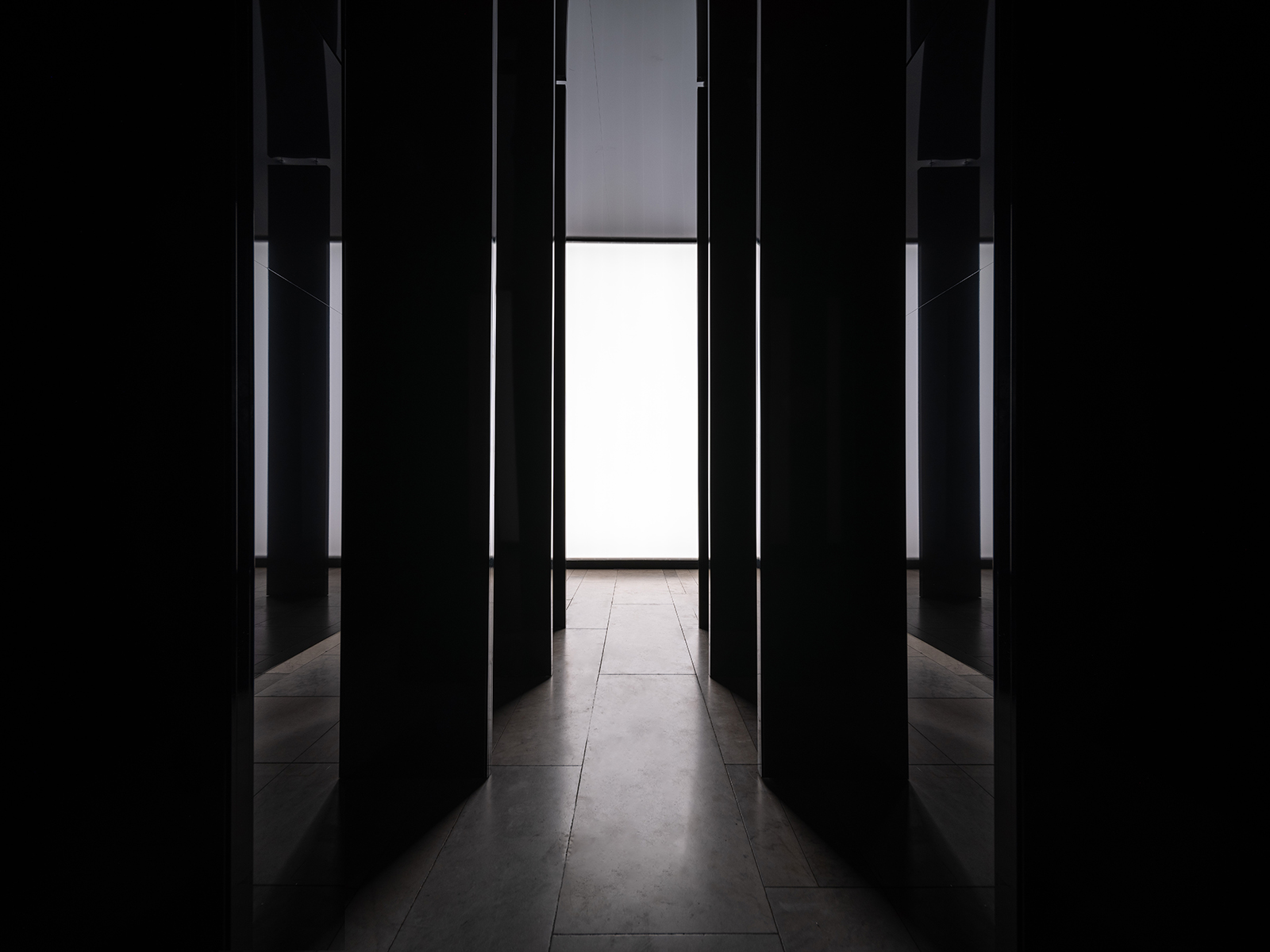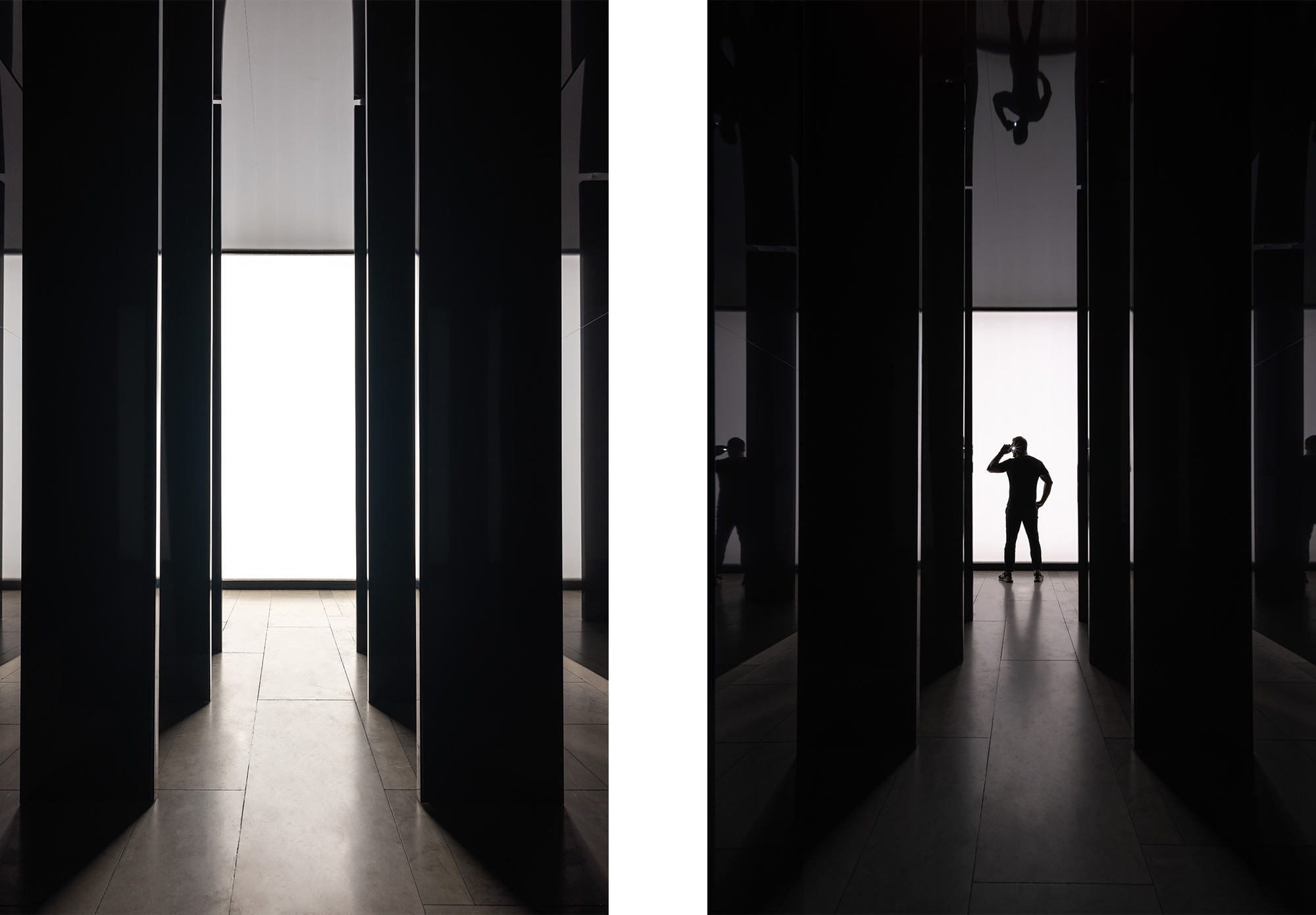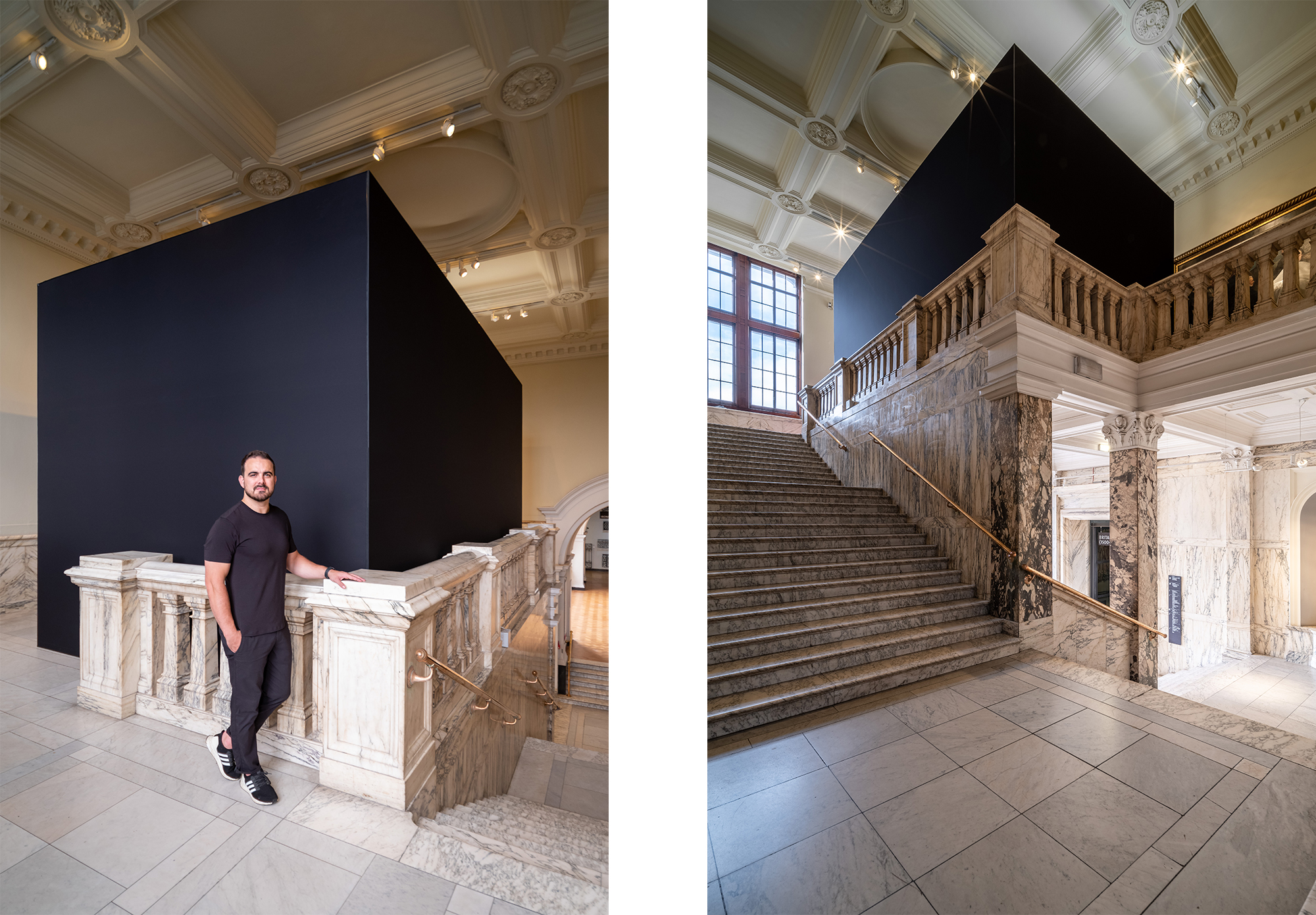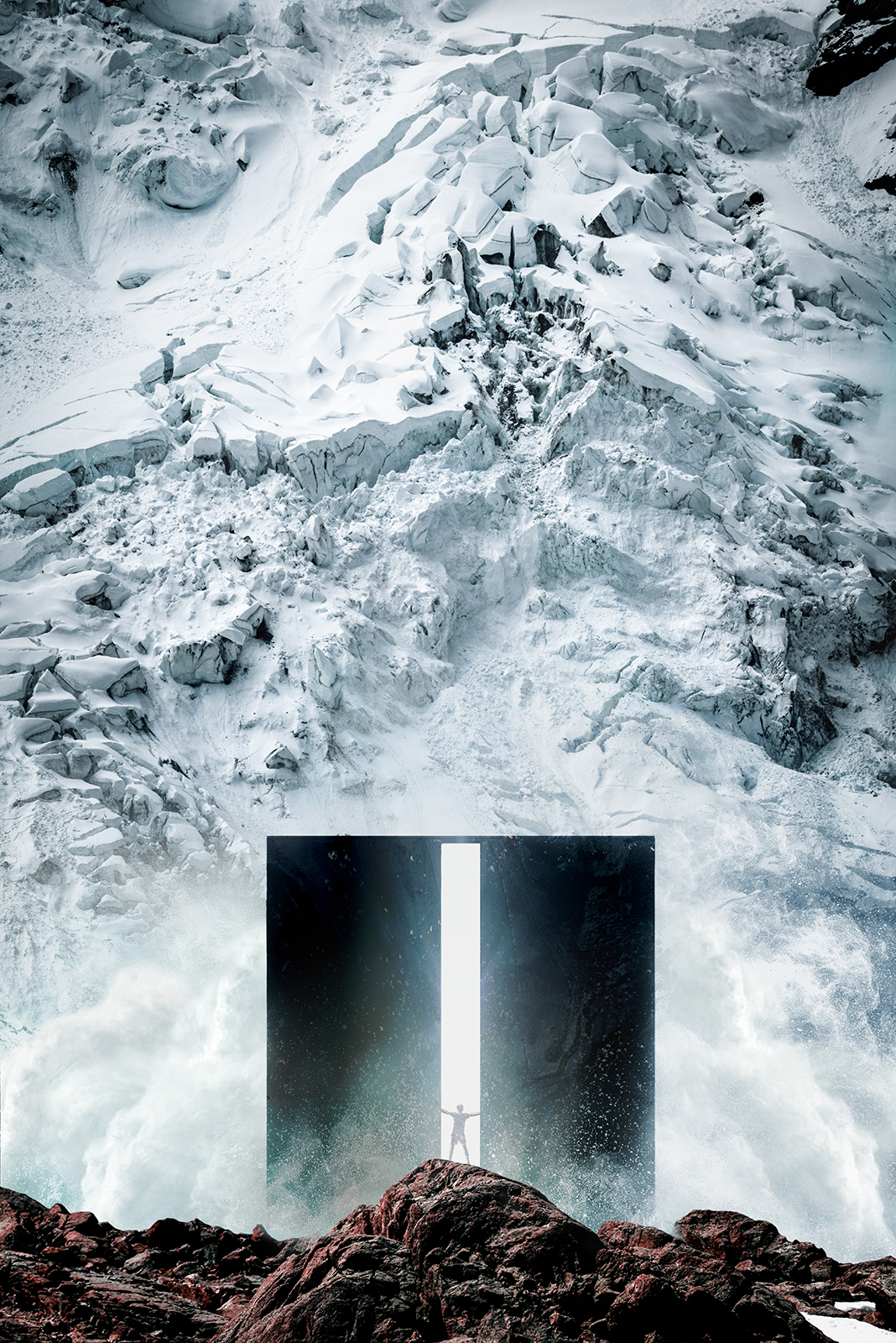Canadian Designer Matthew McCormick Harnesses Avalanches at LDF
AVALANCHE.

A simple empty room evokes unease and can trigger feelings of isolation. It may even make you feel despair or fear. The power of abstraction is a uniquely human ability, by which we fill up blank spaces with introspection and emotion. Through design, there are ways to create environments that attack our senses in order to provoke specific feelings. AVALANCHE, Vancouver-based designer Matthew McCormick’s project for this year’s London Design Festival, is an example of how light, darkness, glass, and sound can force one to reflect on the devastating effects of climate change. And, in turn, promote shifting attitudes about the planet through affects instead of relying solely on facts.
AVALANCHE seems somewhat out of place in London’s Victoria and Albert Museum, and that’s entirely the point. “Sometimes, when things are out of place, it’s jarring. And if it’s jarring enough, it’ll be something that resonates,” McCormick explains. When approaching the theme of sustainability and climate change for the London Design Festival, he sought to create something that resonates with others, “but also spoke to a personal experience.”
“There’s a juxtaposition between this grand historic building and this big, black ominous box,” McCormick says just outside of the temporary installation. His voice is competing with the booming soundscape of his nearby work. The vibrating—just steps away from an exhibit on 16th century Britain—startles those in the museum who came to look at paintings and statues and did not expect a booming multi-media work.

Inside AVALANCHE.
Just over a decade ago, McCormick moved from Toronto to Whistler. After two years living slope-side, McCormick ultimately settled down in Vancouver. Many of the first friends he made in B.C. stayed close to the mountains. Recently, he lost one such friend to an avalanche on a familiar mountain where no avalanches had ever been reported before.
“In a way, AVALANCHE is a nod to him,” McCormick says. He explains the anatomy of an avalanche with the fervour of a middle school science teacher: “When snow normally falls, it consolidates and sits flat. But there’s a snow formation called surface hoar. This is when snow stands upright. It creates an unstable layer in the snow-pack.” The unfamiliar snow jargon all boils down to one sentiment: “There has been an increasing number of avalanches in recent years due to climate change, and it’s literally killing people.” The intention of AVALANCHE isn’t to push the evidence of climate change by explaining the science of snow. Instead, it seeks to elicit and evoke emotion.
Within the exhibit, time stands still. “When you enter, it can feel quite chaotic,” McCormick says. “It’s figuratively and quite literally reflective, so it has a sense of being expansive. And yet, with the tall upright panels, you might begin to feel claustrophobic.” The scale of the space fosters a heightened sense of consciousness, using the contrast of light and darkness to force visitors to reflect.
This exhibition, and climate change more generally, is something that every person will experience differently. “This exhibit only works when you’re in it,” McCormick explains, “you become part of it.” How visitors choose to navigate these emotions when they exit AVALANCHE and re-enter the Victorian style V&A Museum is as unpredictable as the weather itself. McCormick has only one hope for his installation: “to promote and provoke the conversation.”

McCormick stands outside the imposing black box that contains AVALANCHE in the Victoria and Albert Museum in London.
Photography by Steven Maddison.
_________
Never miss a story. Sign up for NUVO’s weekly newsletter here.



